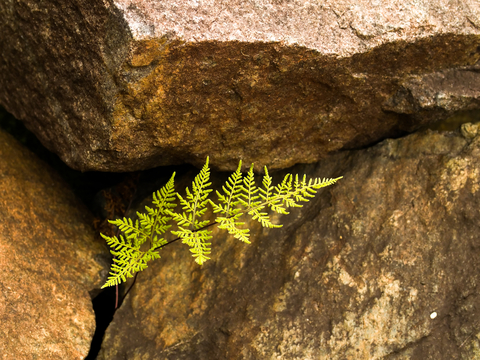July, 2016 Monthly Reflection
June 30, 2016Contemplative Sustainability
by Sister Kathleen Bryant, RSC
 For those of us involved in the multiple facets of fighting human trafficking, it has a price. We hear painful stories while growing in sensitivity and compassion for the suffering of victims. Listening to the horrendous stories, up against systemic injustice and organized crime, and fighting for benefits for survivors demands a commitment and a strong personal support system. How can we continue without compassion fatigue, burnout or cynicism? How can we be attentive to trauma stewardship and be mindful of the resources that sustain us in the work?
For those of us involved in the multiple facets of fighting human trafficking, it has a price. We hear painful stories while growing in sensitivity and compassion for the suffering of victims. Listening to the horrendous stories, up against systemic injustice and organized crime, and fighting for benefits for survivors demands a commitment and a strong personal support system. How can we continue without compassion fatigue, burnout or cynicism? How can we be attentive to trauma stewardship and be mindful of the resources that sustain us in the work?
By listening to women religious and lay people working closely with survivors, I have heard resilience and it sparked curiosity as to how they are sustained in such an intense work over long periods of time.
From Salvation Army workers to women religious, I heard repeatedly that meditation, daily times for gentle stillness, strengthened them to contend with the toll that these traumatic stories take on those who live and work with them. Faith was an anchor in dealing with the ugly realities of those involved in the trafficking of persons.
Judith Sheridan SMSM, who lives in community with survivors, shared that her daily contemplative prayer is her source of resilience and strength. This time of stillness has enabled her to let go when it comes to allowing survivors to learn from their mistakes. “I can’t be responsible for each one.” As Judith surrenders this valid concern in prayer, she experiences peace as she waits in stillness. “If you stay still enough, long enough, you’ll get the grace.” Her daily practice is her what has been described as trauma stewardship. Laura Lipsky writes, “The essence of the trauma stewardship approach is to cultivate the quality of being present, both to the events of our lives and for others and our planet.”

Sister Judith Sheridan SMSM, giving a presentation on human trafficking.
Many of the women involved in this issue reported that immersion in nature, through gardening, hiking, biking, going to the beach, or walking helped sustain them. Many found music, exercise, and movies kept them in balance. Self-care was essential for survival for the long haul. Yoga has taught some active in the fight against human trafficking how to let go and quieted the mind.
Almost everyone found that staying connected with friends, being supported in a loving community, and other social support systems nourished and encouraged them. Observing women recover, heal and move on with meaningful lives gives them the energy to continue. One woman religious reported that hearing a survivor encourage another, “You can do it!” makes her day.
The images of resilience that these women shared included floating in the water, a tree that grows beyond all attempts to kill it, being held in the palm of someone’s hand, a flowing stream, an evergreen tree with strong roots in a drought, a Plover bird at the short walking at the edge of the waves, the fruits growing in our garden.
We know and deeply believe in the interconnectedness of all things – this is true of our beautiful cosmos but as well true of the dark side. Human trafficking is one of many injustices but that one issue is also connected in a web of forces. How do we continue fighting such a powerful lucrative industry with our limited energy and resources? William Blake teaches us, “If one is to do good, it must be done in the minute particulars.” And so we fight human trafficking with each march, with each tender loving relationship with the victims, with each act of advocacy, and with each refusal to feed the consumer monster that drives slave labor supply chains. We move one step at a time, done mindfully, and in the belief that it will reverberate in the web of connected issues. John Muir wrote, “When we try to pick out anything by itself, we find that it is bound fast, by a thousand invisible cords that cannot be broken, to everything else in the Universe.” This is why we work with coalitions, regional human trafficking task forces and The Alliance conscious of the power of each effort maximized when executed by groups.
Contemplative practices that help build resilience could include:
- To step back from the situation and Breathe!
“Sometimes the most important thing in a whole day is the rest we take between two deep breaths.” Etty Hillesum
- A Daily Review with a positive focus: What did I do well today? How can I do more of that tomorrow? From Richard G. Tedeschi, Posttraumatic Growth: Positive Changes in the Aftermath of Crisis
- Breaking out of a rut by creating new habits! Brain plasticity taught us that “Neurons that fire together wire together!” Neuroscientist, Donald Hebb encourages us to “Cultivate positive emotions to wire in new patterns” like cultivating gratitude, a daily walk, gratitude journal, don’t feed the darkness with negative thoughts.
In reading on this topic I have found a Resiliency Skill Set, which includes: faith, prayer, gratitude, positive thinking, forgiveness, humor, friendships, flexibility, exercise, being in nature and engaged in some form of beauty.
For our reflection, I share a lengthy quote from Krista Tippett in her recent book, Becoming Wise An inquiry into the Mystery and Art of Living, “Resilience is a successor to mere progress, a companion to sustainability. It acknowledges from the outset that things will go wrong. All of our solutions will eventually outlive their usefulness. We will make messes, and disruption we do not cause or predict will land on us. This is the drama of being alive. To nurture a resilient human being, or a resilient city, is to build in an expectation of adversity, a capacity for inevitable vulnerability. As a word and as a strategy, resilience honors the unromantic reality of who we are and how we are, and so becomes a refreshingly practical compass for the systems and societies we can craft. It’s a shift from wish-based optimism to reality-based hope. It is akin to meaningful, sustained happiness – not dependent on a state of perfection or permanent satisfaction, not an emotional response to circumstances of the moment, but a way of being that can meet the range of emotions and experiences, light and dark, that add up to a life. Resilience is at once proactive, pragmatic, and humble. It knows it needs others. It doesn’t overcome failure so much as transmute it, integrating it into the reality that evolves.” (Krista Tippett, Becoming Wise, Penguin Press NY 2015, p. 251-253)
Our resilience rooted in contemplative living sustains us in hope for the long haul. As one women religious observed, we are a “great fit” for this work because we have nursed, nurtured, educated, people from all walks of life and remained close to human suffering over the years and we nurtured hope all the way.
I recommend Trauma Stewardship by Laura van Dernoot Lipsky, Verrett-Koehler Publishers, San Francisco 2009.

Sister Judith Sherian SMSM (left) with Rev. Marge Swaker, being honored by the Soroptimists for their work to help others.
Category: Awareness, Monthly Reflections, Survivor Support, The Alliance to End Human Trafficking

